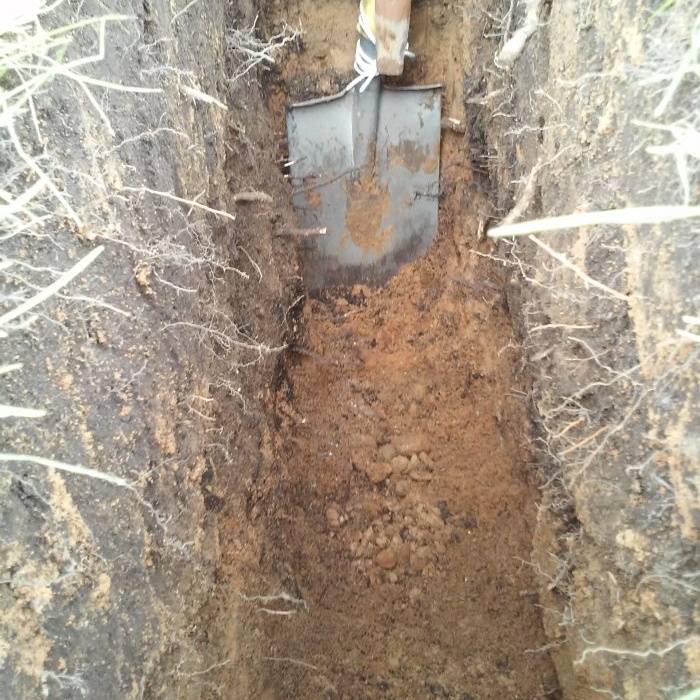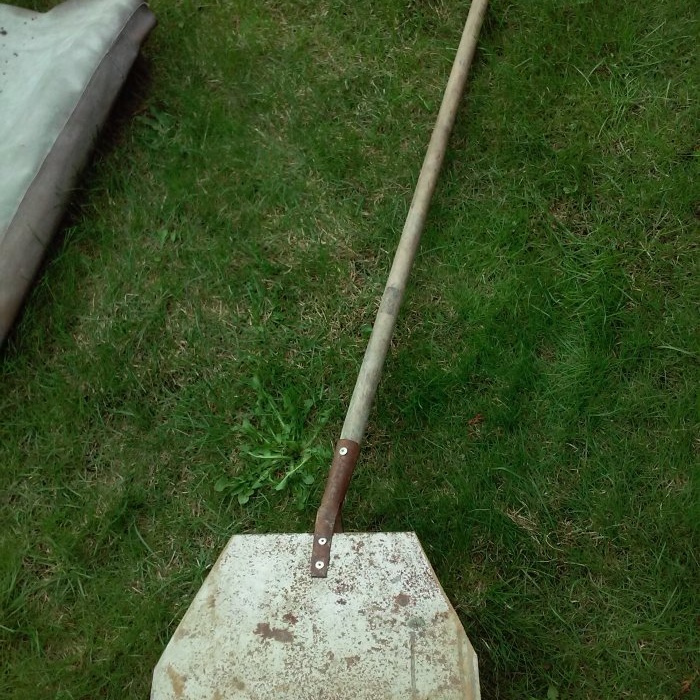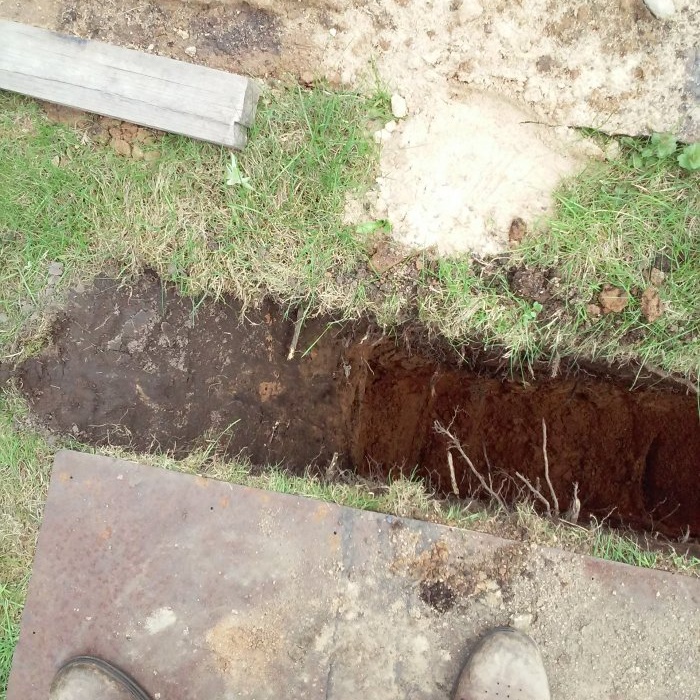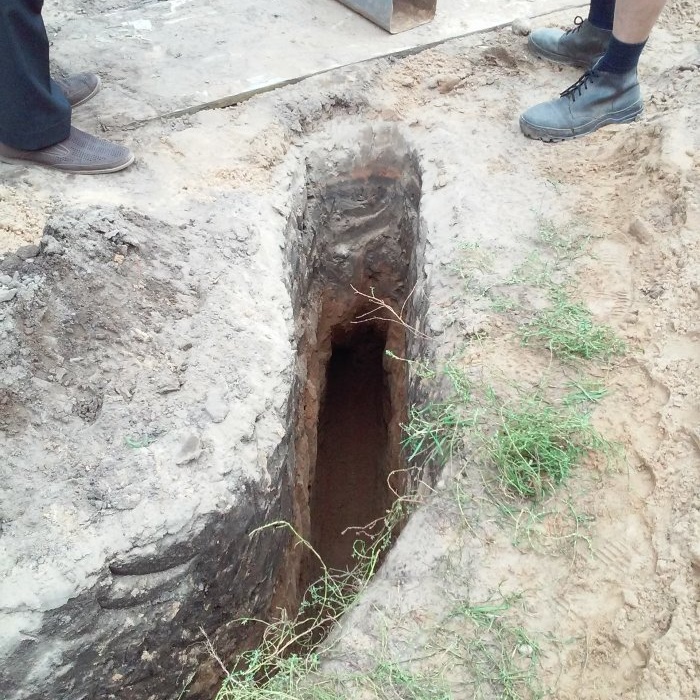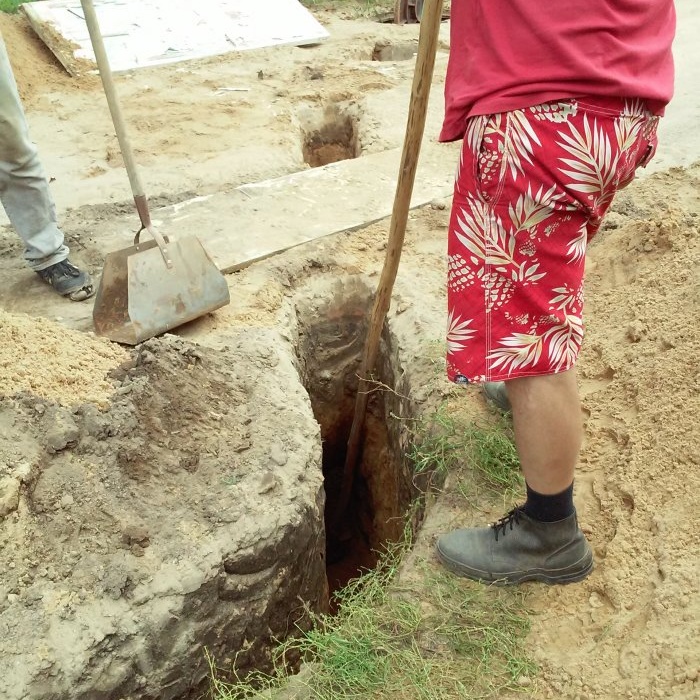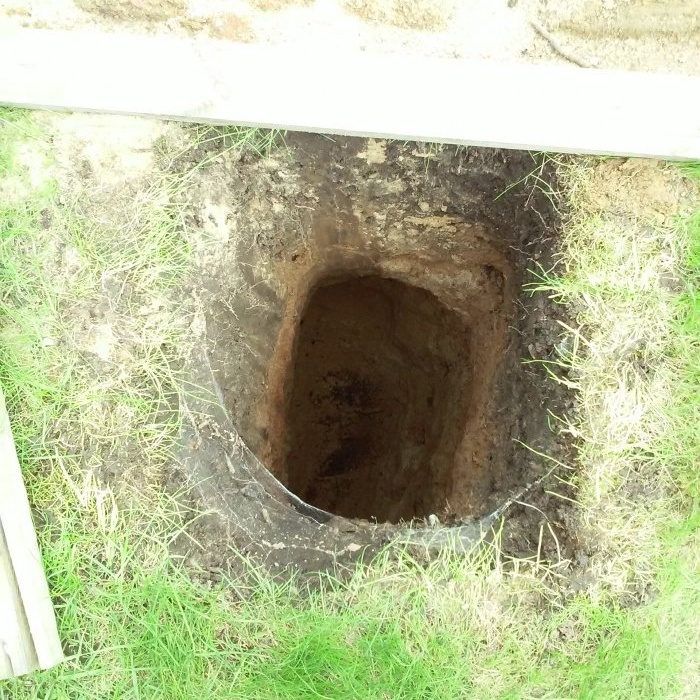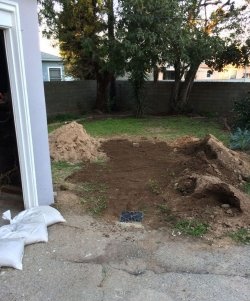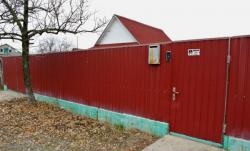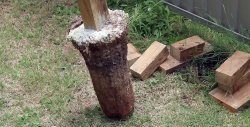
When arranging life in a country house, we often encounter the problem of digging a trench up to 2 m deep to lay a water pipe from a common well behind the fence of the site to the house and installation in the house. The task is not easy, considering that there is a fence, a lawn, beds, a concrete blind area near the house on the way, and you don’t want to destroy all this. You can order a mini excavator or a team of diggers. But this requires a lot of labor: to operate the excavator, you need to dismantle the fence, sacrifice the finished lawn, beds and possibly trees. And then restore it all again. In addition, it is not always possible to use such services everywhere, and these services cost a lot.
The solution has been found. With the help of simple hand tools, you can dig a trench up to 2 m deep of any length almost alone without much effort.
Required
For this purpose the following tools were used:
- a bayonet shovel 0.25 m wide with an additional handle, which has a movable connection made of rope;
- a shovel 0.16 m wide with an extended handle 3 m long;
- bucket 0.16 m wide with a handle 1.8 m long.
Materials used:
- flexible polyethylene pipe.
You need to dig a trench to a depth of 1.8-2.0 m, i.e. more than the freezing depth.
Digging a trench without an excavator
We mark the boundaries of the trench with a width of 0.25 m. To prevent the edges of the trench from crumbling, sheets of metal or boards must be placed on the marked boundary of the trench.

Using a bayonet shovel with an additional handle, you can dig a trench the width of the bayonet and a depth equal to the length of the shovel.
But such a trench depth is not enough. To deepen a trench more than 1.5 m, we use a bucket and a shovel with an extended handle.
Standing at the edge of the trench with a shovel, loosen the soil at the bottom and sides of the trench.

Then the bucket is lowered and filled with soil using a shovel with an extended handle.
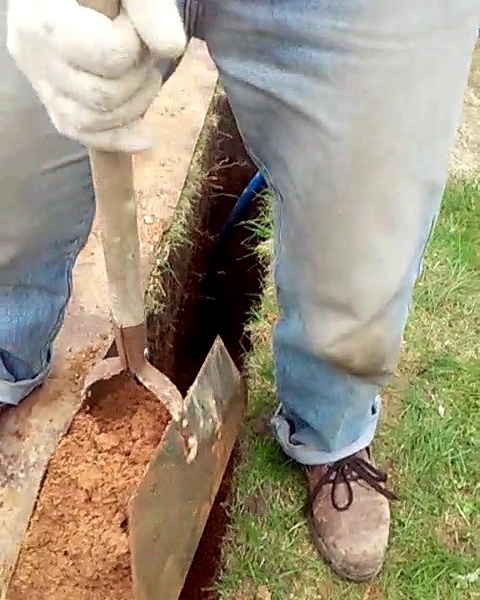
We take the bucket filled with earth to the surface and unload it next to the trench.

For convenience, so as not to pollute the lawn, it is better to pour the soil onto sheets of metal or onto a film laid over the boards.
All manipulations with the tool are carried out only from the surface of the earth; there is no need to bend or climb into a trench.
For further work, a bucket and shovel with an extended handle with a width of 0.16 m, rather than 0.25 m, is used, which can significantly reduce the volume of soil removed.

At the same time, large stones, which are sometimes found deep in the soil, can also be loaded into a bucket of this width. The bucket is open on both sides, allowing it to be loaded from both sides. A fully loaded bucket holds about half a bucket of sand weighing 8-10 kg. If the soil on your site is light, you can also fill the bucket by raking it along the bottom of the trench.
Using such a tool, you can dig a trench using the dash-dot method. This means that the trench is dug in sections of 1.5-2.0 m. A distance of 1.0-1.2 m is left between these sections.And two dug sections are connected along the bottom of the trench at a depth of 1.8 -2.0 m. In this case, there is no need to break through the foundation wall of the house or demolish ready-made beds and a fence.
A flexible polyethylene pipe allows you to pass it along the bottom of the trench into the hole formed.
If you have to connect trench sections with a horizontal well, the distance between which is 2 m or more, you can also use the same tools to dig a hole deeper than the established depth and with a diameter greater than the width of the trench.
This so-called dash-dot method allows you to connect sections of the trench, significantly reducing labor costs.
Using this method, you can lay a pipe under the road without disturbing the road surface. The photograph shows several sections of the trench and untouched sections of the road left along the width of the track.
Friends. Having such a simple tool and using the technological techniques described in this article, you will quickly bring water to your house. In this case, neither the lawn, nor the fence, nor the beds will be damaged.
Watch the video
The technology for digging a trench using these simple devices can be seen in the video:
